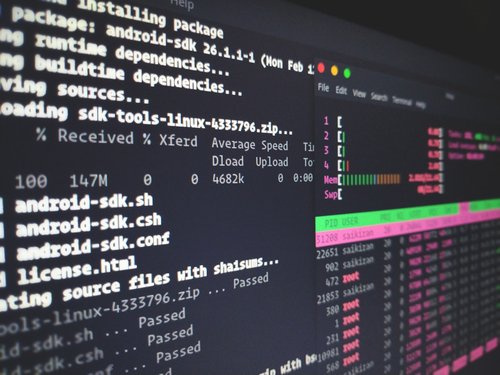

Getting Past Legacy Software Pains in Requirements Management


Generally, the hardware in this situation has a shorter lifespan than the software. With time, the hardware becomes harder to maintain. Such a system will either be too complex or expensive to replace. For that reason, it continues operating.
What is a Legacy System?
Legacy software and legacy hardware are often installed and maintained simultaneously within an organization. The main changes to the legacy system typically only replace the hardware. That helps to avoid the onerous requirements management of the software certification process.
Which Businesses Have Legacy Systems?
Legacy systems operate in a wide range of business organizations, such as banks, manufacturing, energy companies, hospitals, and insurance companies. You can also find them in the defense industry, among other multifaceted business organizations.
Legacy Software Pains in Requirements Management
Only companies born in the digital age don't face the problem of chronic legacy system pains, i.e. the distress of a lack of digital transformation. Legacy systems can involve unbearable complexity, mismatched skills, lack of innovation, bureaucracy, and so on.
Legacy systems form in organizations for many reasons. First, compliance issues and a rollout are often challenging to carry out all at once. There may be an ongoing project that needs the old system. There are also instances where decision-makers don't like change.
However, the shortcomings of operating an old system are annoying and can also cause severe damage to the company. The pains of operating an old system include:

Legacy Systems Strategies are Not Prepared For Change
Legacy systems can include the 'Stop and Start' strategy. There are also long static periods or unchanging business, which was the mainstream way of running business operations throughout the industrial age. This means systems have a short period to make and adapt to any necessary changes, while business stops and waits for the wave of essential changes to finish.
The world doesn't work like this anymore. Intermittent changes allow organizations with old systems to persist up to the next phase of evolution.
Fortunately, there is an alternate option called lean IT. The model advocates for making positive changes and continuous improvements and is aimed at avoiding getting stuck in waiting mode.
The lean IT model is well suited to data-oriented and digital systems, and helps discourage the myopic views that legacy systems foster in the first place.
Legacy Systems Create Security Problems
Legacy systems can pose several data security problems in an organization. Security is a prominent feature of the lean IT model. Continuous improvements and positive changes help to curb the latest threats. Old systems, because of their age, struggle with this.
Legacy systems may pose various challenges when fixing specific vulnerabilities, due to their large and inflexible nature. Making a fix in legacy systems can face delays because developers find it challenging to create one. Also, creating a repair is often not on the development team’s priority list. As a result, the fix ends up being very expensive.
Old systems can enter into a period where there is a danger to the organization due to their outdated security measures.
Inability to Meet Customers on Their Terms
The digital age has created tremendous opportunities, including those related to changing a company's way of operations to benefit its users. Businesses that don't have legacy systems find that when technology moves, the industry can move with it. They are ready to use any new generation that comes out and are prepared to download and install any new application that becomes popular.
Under these conditions, challenges can mount for a company stuck with an old system. Legacy systems have restrictions on using new applications. Businesses that have many customer interactions can encounter serious challenges.
Customers often go for features on the latest applications available in this digital era, such as Instagram and Windows 10 updates. Both of these have chatting options that legacy systems can't enable. This is very much a missed opportunity.
Legacy Systems are Not Cost Effective
It may seem like legacy systems would be less expensive to maintain. However, that connotation changes over time, and circumstances often prove cost to be a pain point. Support and software updates for legacy systems are often much more expensive than current models, whose support and updates are always ready for seamless implementation.
The reason behind the additional maintenance cost is that knowledgeable software developers are hard to find. It involves a lot more work for software developers to offer the necessary continued care and updates for a legacy system than a current system.
Compatibility Issues Threaten Business Interaction
A legacy systems compatibility issue affects all users. We’re talking about the customers and business partners, suppliers, team members, and other associated users.
The legacy system will support file and data formats up to a certain point. But over time, these formats advance over and beyond what the legacy system can handle.
The evolution of support formats only takes a couple of years. In this event, the business will be stuck and experience pain points from using forms the customers or partners are no longer willing to use.
A company without legacy problems will adapt to successful implementation fast, aiming for better collaborations among users and team members. They also avoid waste in IT operations. Therefore, the future of the company's business remains adaptable.

Lack of Storage Availability and Budget
Legacy systems are often full of lurking, untested problems. Support is often difficult to come by, leading to frustrating support interactions.
Customer support is critical, especially when you have large data sets or tight deadlines. Modern software development techniques make it easy to release and access track records. System data storage matters a lot to the users, so data storage and accessibility are key features in new systems that also come in handy when support is necessary.
Unhealthy for Employee Training
Look at the IT team members' psychological aspects for a moment. What does operating a legacy system say to the workforce? It signals that it's okay to work with an old system on one end while putting off addressing worries until later. The system solutions from the past are still working.
But an organization should not encourage this view in their employees, especially when training employees in new skills.
The method may still function, but it will be a massive liability for connectivity and security. Legacy systems also reduce productivity, lower team members' morale, and repel some of the best talents. Employees with first-hand experience in new technology want to hold to that and have no interest in learning old systems.
"If it's not broken, don't fix it" is the IT professional's general attitude. Though it does not stem from any bad intentions, it can cause a company severe problems down the road.
Proprietary Tools are Not Fun
Legacy systems tend to be clunky, extensive, and very proprietary. Changing or customizing them poses a serious challenge. But modern IT professionals prefer to use the latest techniques and have no interest in mastering old systems.
Some organizations' software and hardware needs are different from other companies. Therefore, they need to build their custom software and hardware. New systems have smaller parts that make them flexible and easy to adopt. Specialized needs are no excuse for retaining legacy systems.
Getting Past Legacy Software Pains In Requirements Management
High-regulated industries have difficulty catching up with technology because of their complex systems. You may feel your company has outgrown its requirements management software, and you’re not alone.
The line between software and hardware becomes more and more blurred, and innovations are occurring faster than ever before. Requirements management providers may not supply the right software that matches the users' goals, regardless of the notable reputation or how complex the software is. That can create severe problems that affect productivity.
Here are some common methods for how to work your way out from a legacy system into something much more helpful for yourself and your customers:

Working with Multiple Stakeholders in Mind
Highly regulated industries interact with many different stakeholders and players, which is good for their business. It is essential to value the input of the various roles and skill sets.
But problems can arise if one of these users doesn't know how to use your requirements management software. Stakeholders bring their benefits to the company, but interfering with the system can be a recipe for compliance disaster.
To avoid such problems, look for software that flows with several roles and is seamless. Also, make sure your software integrates user-friendly traceability. Every user on the project needs to see the progress from beginning to end. This will prevent use problems from becoming a lasting problem and hindering productivity.
Timely Notifications to Help Meet Deadlines
Missing deadlines happen in many organizations. A team member needs to provide feedback but fails to do so on time. It could have been sent via email, Google, or Word document that someone didn’t know to monitor. Whichever means were used, the model of collaboration in place failed.
Review processes are quite complex these days, and you need collaboration software that sets clear intentions for the users. Real-time notification and editing will help keep team members on the truck.
Opt for a requirements management tool that prompts the next step to avoid falling into the trap. The requirements management software will help to prevent blame games - and it’s an excellent reason to suggest upgrading away from the legacy system altogether.
Accessibility and Intuitiveness
There may be instances where you want to carry out an essential process through the legacy system - but you are somehow locked out. You may have challenges finding the person who manages the system access rights and can get you back in the loop.
The situation can be frustrating and pose significant risks to the company, since one can attempt to break into the system for a couple of hours. This also wastes time. The desire to provide timely feedback with confidence is thwarted, which goes against the first intention of collecting the data.
The right requirements management tool should provide continuous data collection and growth. To achieve this, it should be open, accessible, and intuitive. The stakeholders will get motivation and provide constant input and collaboration, which is vital in keeping up with breakneck innovation.
An Upgrade Doesn’t Have to Spell Disaster
When an upgrade notification pops up on our screen, it’s normal to get skittish. There was once a very real fear of losing essential data and vital information with any kind of system update.
But this fear has dissipated with the advent of the cloud. A company no longer has to fear upgrading and fixing software requirements. It’s necessary to improve the security requirements and access some of the latest features.
It's crucial to have a system that adapts quickly to update requirements. When purchasing legacy software, consider the opportunity costs of not upgrading and encountering the headache of being locked out of various unsupported platforms.
Data Storage, Security, and Availability
As part of evaluating your current system, investigate data storage safety during software development. Find out from existing customers how well your system releases the accurate document.
Whatever system you choose will be around for a long time, so you will need to measure your predicted needs from the vendor. You will be putting some of your crown jewels on the system you want to buy. They need to be safe.
Conclusion
We live in an age with the most innovative and disruptive products available to more people than ever. We have ultra-fast electric cars, self-piloted spaceships, and lifelike prosthetics. We also have some of the brightest minds toiling to help propel us into the future.
This means the regulatory environment now is more stringent, especially on public safety and the marketplace demands. There is a need to have a team ready to meet the ever-increasing demands of compliance.
To be on the safer side, you need to put in place a collaborative infrastructure to keep the team organized and detect mistakes of disconnected persons in real-time. The future of your company depends on it.
Frequently Asked Questions
In what ways can one modernize a legacy system?
Migrate. This allows the business to perform critical processes immediately. Legacy software may not be flexible enough to allow the expected modification. Also, your old system may not offer its users the right results. Legacy migration can be the better choice in this case.
The other option is extension. You may not need to replace a legacy system that still performs its core functions (especially if it still has some years of warranty remaining). Despite that, you can still modernize it by extending its capabilities.
How do you handle management pushing legacy systems?
Try to make concrete and practical recommendations on how to make the legacy system better. Provide evidence on how the improvements will lead to better performance. You may change minds by presenting realistic situations where the legacy system can still be helpful in the future with just a few additions.








 1 user
1 user






 Continue Wishlist
Continue Wishlist





 Getting Started Guide
Getting Started Guide
 Help Center
Help Center
 Contact us
Contact us
 Doist Blog
Doist Blog
 Privacy
Privacy
 Security
Security
 Terms of Service
Terms of Service
 What's new: Channel Descriptions
What's new: Channel Descriptions





 LabView Tutorials
LabView Tutorials syedzainnasir
syedzainnasir 0 Comments
0 Comments








 2.3k
2.3k
 953
953
 921
921
 2.1K
2.1K
 Getting Past Legacy Software Pains in Requirements Management
Getting Past Legacy Software Pains in Requirements Management

 Friday, June 17, 2022
Friday, June 17, 2022























